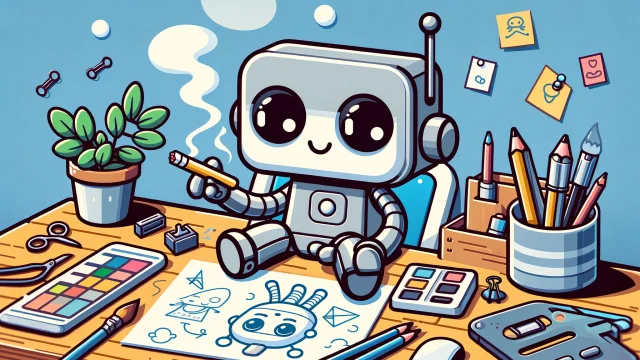The Theme of Destruction in the Dragon Ball Universe
“Destruction” is a recurring and powerful theme in the Dragon Ball series, manifesting in the form of devastating battles, planet-shattering techniques, and godlike figures such as the Gods of Destruction. From iconic moments like the destruction of Planet Vegeta to the introduction of Beerus, the God of Destruction, this concept serves as both a narrative driver and a symbol of ultimate power.
This article explores how destruction shapes the Dragon Ball universe, its connection to key characters and events, and its significance in the broader themes of the series.
- 1. Destruction in the Dragon Ball Universe
- 2. Notable Moments of Destruction
- 3. The Gods of Destruction
- 4. Techniques Associated with Destruction
- 5. Thematic Significance of Destruction
- 6. Fan Perspectives on Destruction
- 7. Destruction in Dragon Ball Spin-Offs
- Conclusion: Destruction as a Core Element of Dragon Ball
1. Destruction in the Dragon Ball Universe
1.1. A Catalyst for Conflict
- Destruction often acts as the starting point for major conflicts, such as Frieza’s annihilation of Planet Vegeta, which drives the Saiyan saga.
- It serves as a visual representation of the stakes, with entire worlds or civilizations hanging in the balance during battles.
1.2. A Display of Power
- Destruction in Dragon Ball showcases the overwhelming strength of its characters, from Goku’s energy blasts to Beerus’s universe-shaking Hakai techniques.
2. Notable Moments of Destruction
2.1. Planet Vegeta
- Destroyed by Frieza: The obliteration of Planet Vegeta marks one of the most significant moments in Dragon Ball, setting the stage for Goku and Vegeta’s journeys.
- Impact on Saiyans: This act eradicates most of the Saiyan race, creating a sense of loss and revenge that permeates the series.
2.2. Earth’s Destruction
- Majin Buu Saga: Kid Buu destroys Earth in one of the most shocking moments of Dragon Ball Z, forcing the remaining Z Fighters to relocate their battle.
- Dragon Balls Restore Balance: The repeated destruction and resurrection of Earth underscore the series’ reliance on the Dragon Balls as a symbol of hope and renewal.
2.3. The God of Destruction, Beerus
- Introduction in Dragon Ball Super: Beerus embodies destruction as a divine force, wielding his power to erase planets with ease.
- Hakai Technique: Beerus’s ability to erase entities from existence elevates the stakes, reminding the Z Fighters of their place in the cosmic hierarchy.
3. The Gods of Destruction
3.1. Role in the Universe
- The Gods of Destruction are responsible for maintaining balance by erasing planets, civilizations, or even universes when deemed necessary.
- Each universe has its own God of Destruction, paired with an Angel to guide and oversee their actions.
3.2. Beerus, Universe 7’s God of Destruction
- As the God of Destruction for Goku’s universe, Beerus plays a complex role, balancing his destructive duties with his whimsical personality.
- His relationship with Goku evolves from adversarial to mentor-like, as Goku learns about the nature of divine power.
4. Techniques Associated with Destruction
4.1. Energy Blasts
- Many characters wield energy blasts capable of destroying entire planets, such as:
- Frieza’s Death Ball: Used to obliterate Planet Namek.
- Vegeta’s Final Flash: A devastating technique that demonstrates the raw power of a Saiyan Prince.
4.2. Hakai
- The signature move of the Gods of Destruction, Hakai is the ultimate expression of destructive power, erasing anything from existence.
4.3. Spirit Bomb
- Although a tool for justice, the Spirit Bomb’s immense power represents destruction used for good, capable of annihilating even the most powerful foes.
5. Thematic Significance of Destruction
5.1. Balance Between Creation and Destruction
- Destruction is portrayed as a necessary force in the Dragon Ball universe, balancing creation and maintaining order.
- This theme is reflected in the interplay between the Gods of Destruction and the Kais, who are responsible for creation.
5.2. The Consequences of Power
- The series often explores the responsibility that comes with immense power, as characters grapple with the impact of their destructive abilities.
5.3. Hope and Renewal
- Despite the devastation, the Dragon Ball series emphasizes the cyclical nature of destruction and renewal, with the Dragon Balls symbolizing hope for rebuilding.
6. Fan Perspectives on Destruction
6.1. Iconic Visuals
- Moments of destruction, such as the explosion of Namek or Beerus’s Hakai, are some of the most visually striking in the series.
6.2. Emotional Impact
- Scenes of destruction often carry emotional weight, from the loss of Planet Vegeta to the sacrifices made to save Earth.
6.3. Philosophical Discussions
- Fans frequently debate the moral implications of destruction, particularly regarding the actions of the Gods of Destruction.
7. Destruction in Dragon Ball Spin-Offs
7.1. Video Games
- Games like Dragon Ball Xenoverse and Dragon Ball FighterZ feature destructible environments, adding an interactive dimension to the concept of destruction.
7.2. Movies
- Films like Dragon Ball Z: Resurrection ‘F’ and Dragon Ball Super: Broly showcase large-scale destruction as a central theme.
Conclusion: Destruction as a Core Element of Dragon Ball
Destruction in Dragon Ball is more than just a spectacle—it’s a narrative tool that highlights the stakes, defines characters, and explores the balance between chaos and order. From the annihilation of planets to the divine duties of the Gods of Destruction, the concept remains integral to the series’ storytelling.
While destruction often brings tragedy, it also paves the way for growth, renewal, and the enduring spirit of the Z Fighters. In the ever-expanding universe of Dragon Ball, destruction continues to challenge and shape the heroes, pushing them to transcend their limits and protect what they hold dear.

